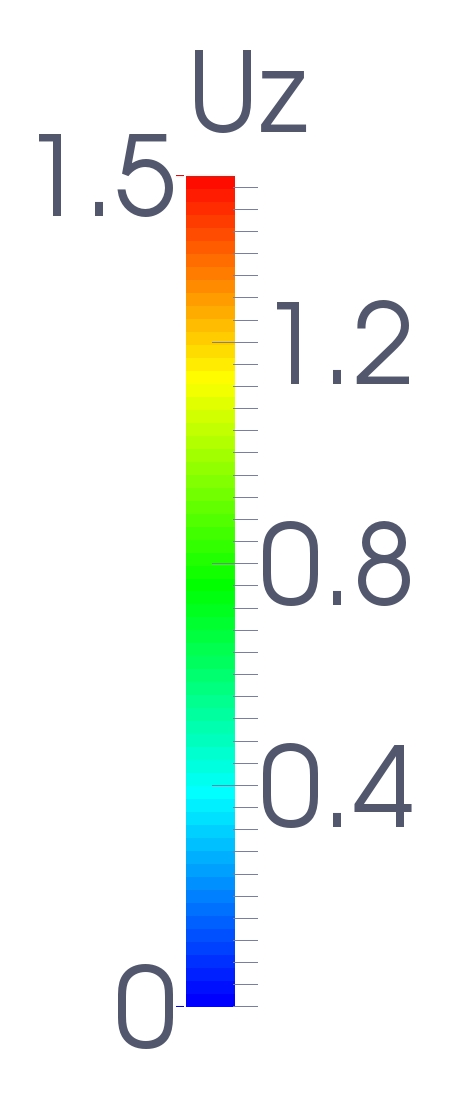Simulation of heat transfer phenomena
 © Chu, IKE |
The efficiency of a heat exchanger may vary considerably with the operating conditions. At super-critical pressure a deterioration of heat transfer is often observed, which reduces its efficiency drastically. For an investigation of this special phenomenon in narrow channels and pipes (diameter approx. 1-5 mm) Direct Numerical Simulations of Carbon Dioxide (CO2) at super-critical pressure of 80 bars in a heated, vertical pipe are performed. In case of upward flow, heat transfer deterioration and recovery is demonstrated. Deterioration is shown in the simulated pipe on the left, where supercritical CO2 enters the pipe from below. Downstream of the inlet of the turbulent flow into the pipe the flow is accelerated due to the thermal expansion and re-laminarization occurs: the number of turbulence structures decreases. In the upper region of the pipe turbulence recovers and the heat transfer is enhanced. On the right-hand side, the heat transfer efficiency in downward flow conditions is enhanced from the beginning. This can be seen in the pipe on the right, where the supercritical CO2 enters the pipe from the top. In this case, no re-laminarization occurs due to the unstable stratification. Through further analysis of the turbulence statistics, it is confirmed that the buoyancy-induced re-laminarisation is responsible for that dramatic change of heat transfer. The obtained turbulence statistics is used for the development of a new model to predict the wall friction and heat transfer of flows with supercritical-CO2 accurately.
|
 © Chu, IKE |
||
|
Direct numerical simulation database for supercritical dioxide. |


